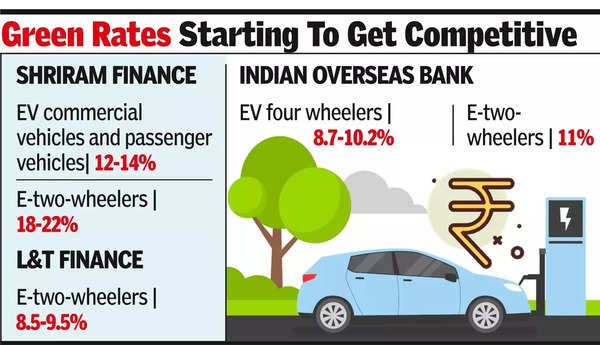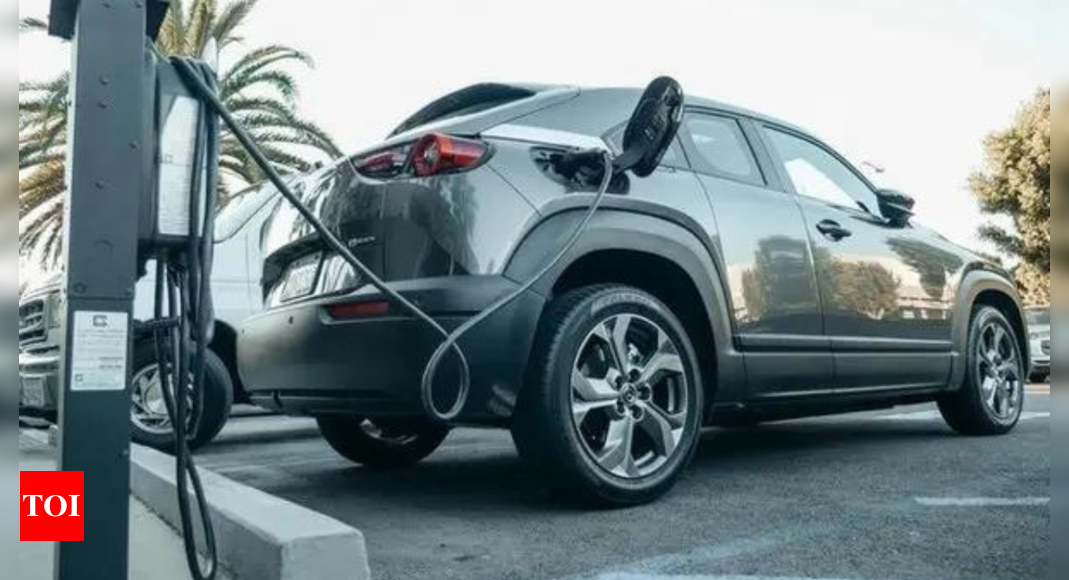[ad_1]
In electric passenger vehicles, the rates are competitive with ICE and sometimes lower as well. In e-two-wheelers, the rates are invariably higher depending on the brand and the credit profile of the customer.
“Captive NBFCs and banks offer green loans for e-PVs which is 0.1% cheaper than ICE financing so the rates are more or less the same. In e-two wheelers, the rate differential is anything from 1-4% depending on product and brand,” said Deloitte India partner Rajat Mahajan.
Currently, loans for petrol and diesel passenger vehicles attract anything between 9.3% and 10.3% interest rates, while ICE two-wheeler rates are 16-20%. In EVs, cars and SUVs come for 8.5-9.5% while e-two-wheelers come for 18-22%.
But that’s not the critical part. Financiers and dealers admit, off the record, that EV financing is lower than ICE even when both are from the same automotive brand.
“As EVs are an evolving segment, banks and NBFCs have been cautious while funding due to lack of understanding of how EV batteries work (working life, replacement/repairs) and are awaiting the evolution of a strong secondary/resale market,” IndoStar Capital Finance CEO Karthikeyan Srinivasan said.
That explains the difference in financing penetration between ICE and e-two-wheelers. “Currently, petrol two-wheeler financing penetration is 80% plus,” said Nikunj Sanghi, MD of JS Fourwheel, Hero Motocorp and M&M dealers. While, “financing penetration of e-two wheelers have gone from 15-20% around 18 months ago to 40-45% now with 80% financing coming from banks,” said Mahajan.

EV financing has also seen rate revisions in the past one year. Public sector Indian Overseas Bank for instance has increased the rate of interest for EV four-wheelers by 25 basis points to 8.65-10.15% from 8.4-9.9% a year ago due to revision in repo-linked lending rate. However, its rate of interest on EV two-wheelers remains the same at 11%. The bank also provides 0.2% interest concession for e-four-wheelers “to promote clean energy and environment”, said IOB MD & CEO Ajay Kumar Srivastava. L&T Finance has also hiked rates on EV financing by 1-1.5 percentage points in a year. “Currently, it is 8.5-9.5% (flat). The range is due to the different risk profiling of clients,” said a spokesperson.
In commercial vehicles, where EV adoption is higher than PVs, there has not been much change in rates and EVs are more competitive than ICE. Reason: captive NBFCs. Mahesh Babu, CEO, Switch Mobility said: “We leverage the synergies of Hinduja Leyland Finance, the financing arm within our group, utilising financial infrastructure to provide competitive financing options for customers.”
[ad_2]
Source link


